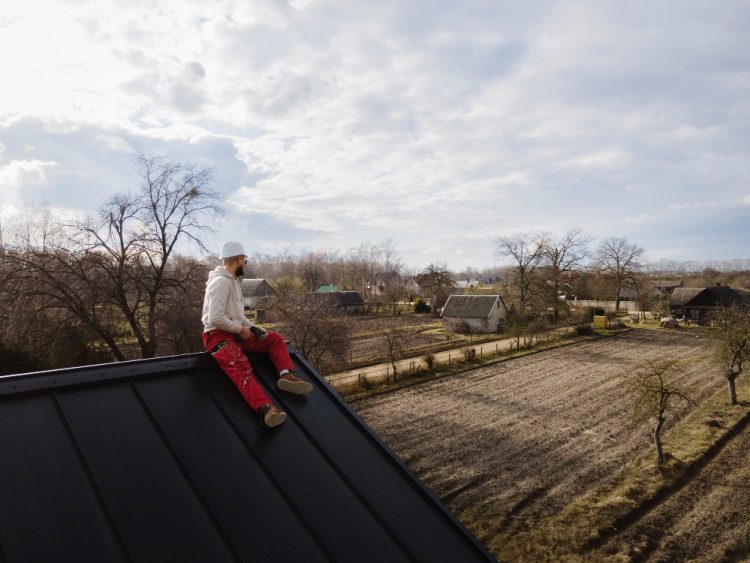Few cities in America face weather challenges as frequently — or as fiercely — as Colorado Springs. With powerful hailstorms, heavy snow, and sudden temperature shifts, it’s a testing ground for roofing durability and contractor reliability. Over the past decade, this city has transformed its storm-response playbook into a model that roofing and construction industries across the country now study closely. The Colorado Springs roofing industry has proven that innovation, organization, and community-focused recovery can turn even the most damaging storms into opportunities for smarter rebuilding.
A City Built on Resilience
Colorado Springs sits in what meteorologists call “Hail Alley,” one of the most active hail regions in North America. Each spring and summer, storms bring golf-ball-sized hail capable of damaging thousands of roofs in a single afternoon. In some years, insurance payouts for El Paso County have topped hundreds of millions of dollars.
But rather than being defined by destruction, the city has become defined by its resilience. Local contractors, suppliers, and insurance specialists have built a responsive ecosystem that gets neighborhoods back to normal quickly — often in weeks instead of months. The city’s roofing professionals are known for their ability to scale up fast after major storms, coordinate with insurance adjusters efficiently, and maintain high workmanship standards even during peak demand.
Streamlined Insurance Collaboration
One of the biggest reasons Colorado Springs is viewed as a model market for post-storm recovery is its approach to insurance coordination. Roofing contractors here have developed clear, client-friendly processes that minimize stress for homeowners filing claims after hail or wind damage.
In many cases, roofing companies now act as trusted guides through the entire process: verifying damage before a claim is filed, meeting with adjusters to ensure nothing is overlooked, and handling all supplemental paperwork when insurance estimates fall short. This hands-on support helps prevent claim denials and ensures homeowners receive full coverage for legitimate repairs.
Contractors elsewhere are adopting this Colorado Springs standard — treating insurance support not as an upsell, but as an essential part of the roofing service. It’s a shift that has redefined customer expectations nationwide.
Innovation Through Necessity
Frequent storms have also fueled innovation. Colorado Springs roofing contractors were among the first to adopt impact-resistant materials such as Class 4 shingles, metal systems, and polymer composites designed to withstand hail better than traditional asphalt.
Manufacturers now test many of these products in Colorado’s Front Range region precisely because of the area’s extreme weather. The result is a cycle of continuous improvement — real-world testing leads to stronger materials, and stronger materials lead to fewer insurance claims and longer-lasting roofs.
Additionally, drone inspections, satellite imagery, and advanced moisture-detection tools have become standard practice in the local roofing market. These technologies not only speed up post-storm assessments but also improve accuracy and safety. Many contractors nationwide are following suit, adopting the same tools that became common first in Colorado Springs.
The Human Element of Recovery
Beyond technology and logistics, the Colorado Springs roofing industry has built its reputation on something even more valuable: trust. After a major storm, “fly-by-night” roofing companies often appear, chasing insurance work. In response, local professionals have built strong reputations grounded in transparency, local licensing, and verifiable reviews.
By educating homeowners about how to verify credentials, check for warranties, and identify legitimate contractors, the industry has raised the bar for ethical roofing nationwide. Consumers in other storm-prone states — from Texas to Oklahoma to Florida — are now demanding the same accountability that Colorado homeowners have come to expect.
Setting the National Standard
Today, Colorado Springs stands as more than just a busy roofing market — it’s a blueprint for post-storm recovery across the country. The lessons learned here extend far beyond the Rockies:
- Act fast but maintain standards.Efficiency doesn’t mean cutting corners.
- Integrate with insurance systems.Homeowners value roofers who simplify the claims process.
- Adopt impact-resistant technology.Stronger roofs mean fewer claims and safer communities.
- Build trust through transparency.Ethical business practices protect both clients and the industry’s reputation.
As climate patterns continue to bring more intense weather events nationwide, the model pioneered in Colorado Springs is becoming increasingly relevant. Contractors, insurers, and homeowners alike can look to this city as proof that preparation, innovation, and integrity can transform even the harshest storms into opportunities for growth.
In many ways, Colorado Springs has redefined what it means to recover — not just to rebuild what was lost, but to build smarter, stronger, and better prepared for whatever nature brings next.






